This post contains affiliate links, which means I may earn a commission if you purchase through those links (at no extra cost to you).
Creamy mac and cheeses, gorgeous gravies, and chowders that stick to the spoon: They all start with a roux made with fat and flour. Grab your whisk and brush up on this classic culinary technique.
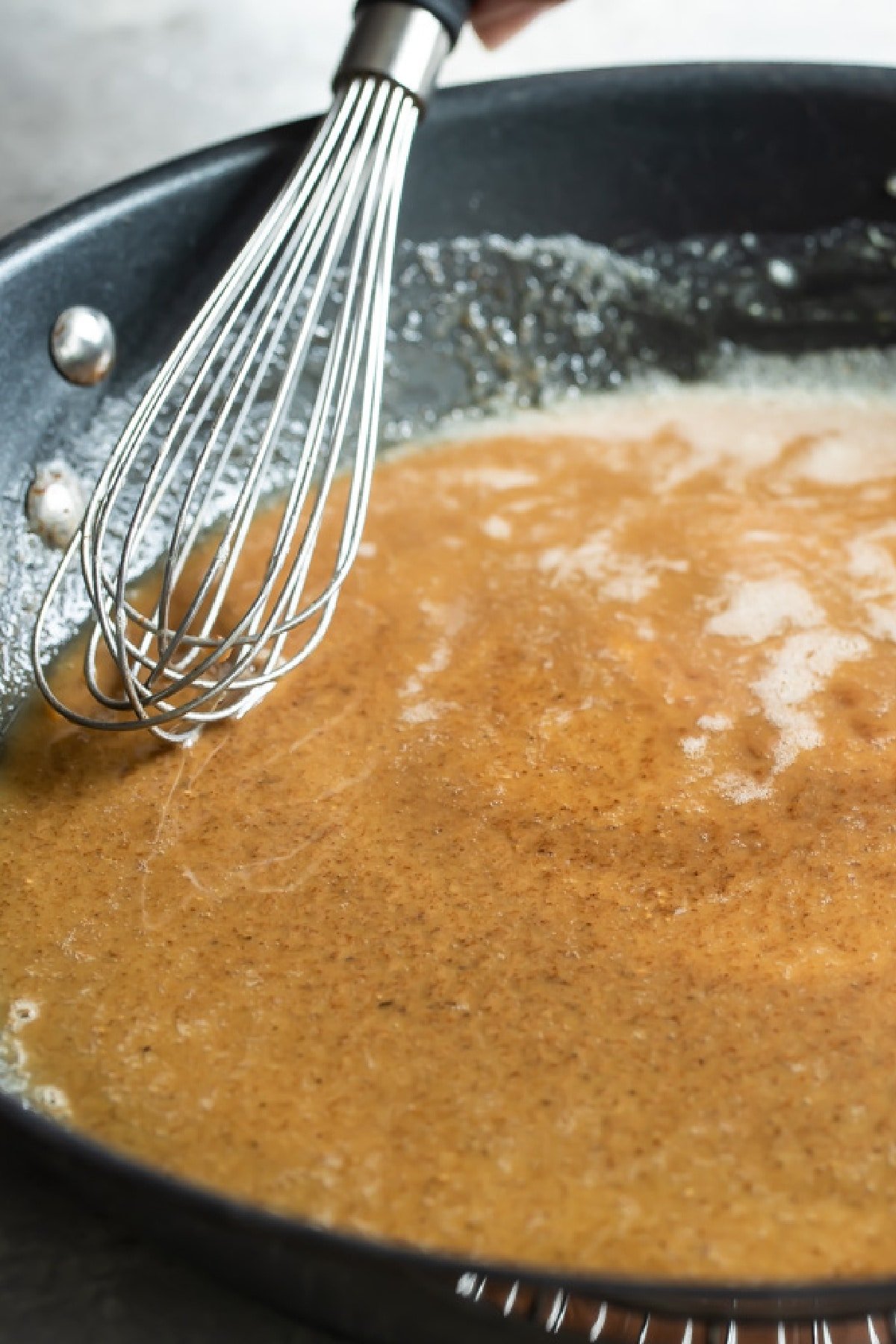
If you’ve been cooking for awhile, you’ve probably made a roux (pronounced “roo”) already, just by whisking some flour into foamy melted butter in a pan. Maybe for turkey gravy at Thanksgiving, or a homemade Mac and Cheese.
At its most basic, a simple roux is made with equal parts fat and flour. Not all roux is the same, though, so here’s a deeper dive into one of the fundamentals of European and American cooking.
Recipe ingredients:
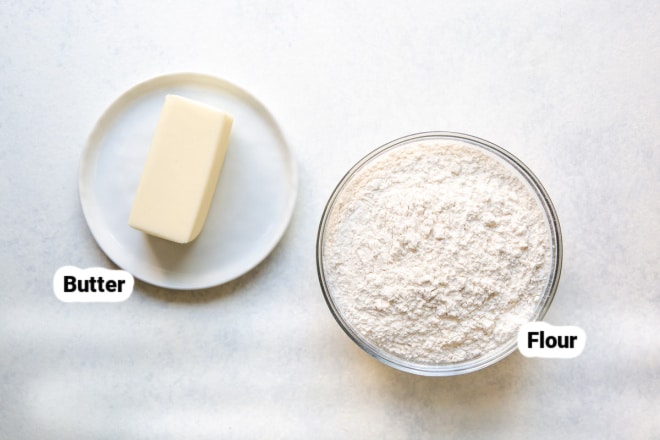
Ingredient notes:
- Fat: Butter, clarified butter, oil, or pan drippings; some kind of fat to mix with the flour.
- Flour: All-purpose flour is most commonly used, but you can also use any flour.
Step-by-step instructions:
- Melt some butter in a pan over medium-high heat.
- As soon as the butter stops foaming, add some flour and stir with a whisk or wooden spoon.
- Then simply cook the mixture, stirring or whisking constantly, until you reach the color of the roux your recipe needs.
- Once you hit just the right point, you can add small amounts of liquid into the roux. Whisk between additions to thoroughly incorporate the liquid. Once the liquid comes to a boil, the roux will begin to work its thickening magic.
Recipe tips and variations:
- White Roux: Commonly used for white sauces, béchamel sauce, chowders, cheese sauces, or scalloped potatoes. Just cook until the flour loses its raw grain smell (about 1 minute).
- Blond Roux: Can be used for ivory-colored sauces or for a richer flavor; a good choice for gravies, stews, or broth-based sauces. Cook until the roux has a golden-brown color ( about 3 to 5 minutes).
- Brown Roux: Also known as dark roux, is a staple in Cajun and Creole recipes. Dark roux gives a deep, nutty flavor to whatever it touches. Keep cooking and whisking until the roux has a deep brown color (about 5 to 10 minutes or longer).
- Thickening power: As a roux browns, it loses its ability to thicken. Over time, the starch molecules break down. Therefore white roux has much more thickening power than a dark roux.
- Stay away from aluminum cookware: When you use a whisk, make sure the pot isn’t bare aluminum. The metal-on-metal will turn your sauce gray. Switch to a good wooden spoon instead.
- Use a heavy pot: The sturdier, the better. This will keep the flour and butter from burning.
- Stir constantly: Stirring or whisking is the key to preventing your roux from scorching. Stand by the stove the whole time, watching the pan for any hot spots that could ruin your roux.
- A little goes a long way: You certainly don’t need a lot of flour to thicken a standard recipe; usually a couple tablespoons is enough. Also, the roux doesn’t begin to show signs of thickening until the sauce just hits the boiling stage, so be patient.
- Yield: Use 3 ounces roux per 4 cups liquid for a light sauce, 4 ounces for a medium-thick sauce, and 6 ounces for a thick sauce.
- Reheating: Most traditional roux can be gently reheated when you need it.
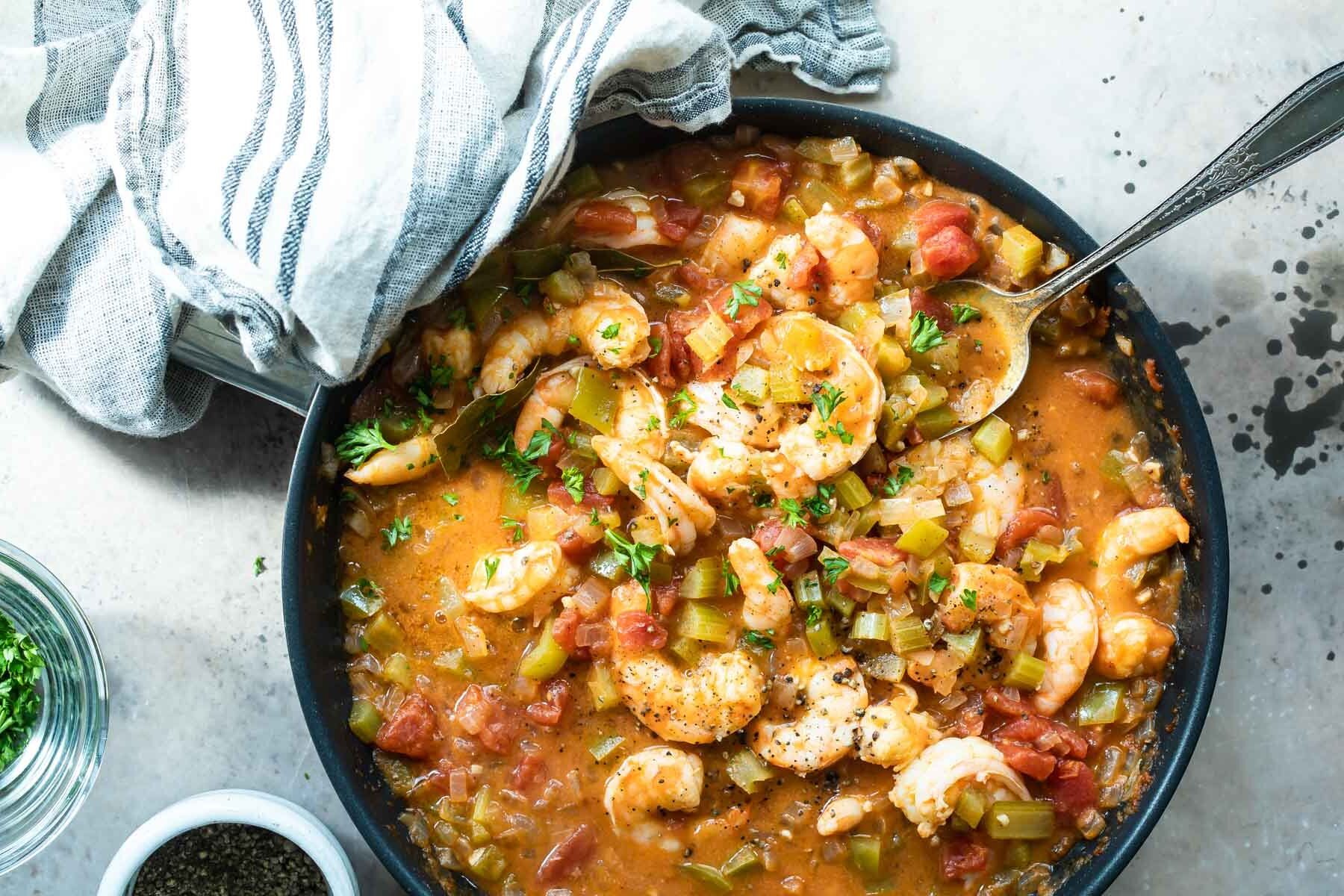
Recipes that use roux:
- Shrimp Creole (above)
- The Best Swedish Meatballs
- Baked Mac and Cheese
- Chicken and Mushroom Stroganoff
Join Us
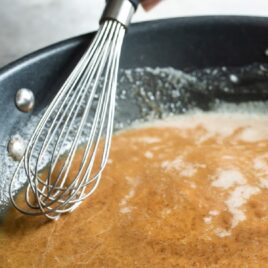
How to Make Roux
Ingredients
- 2 ounces butter (about ½ stick, see note 1)
- 2 ounces all-purpose flour (about ½ cup, see note 2)
Instructions
- In a large heavy pot over medium heat, melt butter until foaming. Whisk in flour and cook until desired color is reached, about 1 to 5 minutes or more.
- Whisk in cold liquid to make sauce and simmer until thickened.
Notes
- Fat: Butter, clarified butter, oil, or pan drippings; some kind of fat to mix with the flour.
- Flour: All-purpose flour is most commonly used, but you can also use any flour.
- White Roux: Commonly used for white sauces, béchamel sauce, chowders, cheese sauces, or scalloped potatoes. Just cook until the flour loses its raw grain smell (about 1 minute).
- Blond Roux: Can be used for ivory-colored sauces or for a richer flavor; a good choice for gravies, stews, or broth-based sauces. Cook until the roux has a golden-brown color ( about 3 to 5 minutes).
- Brown Roux: Also known as dark roux, is a staple in Cajun and Creole recipes. Dark roux gives a deep, nutty flavor to whatever it touches. Keep cooking and whisking until the roux has a deep brown color (about 5 to 10 minutes or longer).
- Thickening power: As a roux browns, it loses its ability to thicken. Over time, the starch molecules break down. Therefore white roux has much more thickening power than a dark roux.
- Stay away from aluminum cookware: When you use a whisk, make sure the pot isn’t bare aluminum. The metal-on-metal will turn your sauce gray. Switch to a good wooden spoon instead.
- Use a heavy pot: The sturdier, the better. This will keep the flour and butter from burning.
- Stir constantly: Stirring or whisking is the key to preventing your roux from scorching. Stand by the stove the whole time, watching the pan for any hot spots that could ruin your roux.
- A little goes a long way: You certainly don’t need a lot of flour to thicken a standard recipe; usually a couple tablespoons is enough. Also, the roux doesn’t begin to show signs of thickening until the sauce just hits the boiling stage, so be patient.
- Yield: Use 3 ounces roux per 4 cups liquid for a light sauce, 4 ounces for a medium-thick sauce, and 6 ounces for a thick sauce.
- Reheating: Most traditional roux can be gently reheated when you need it.
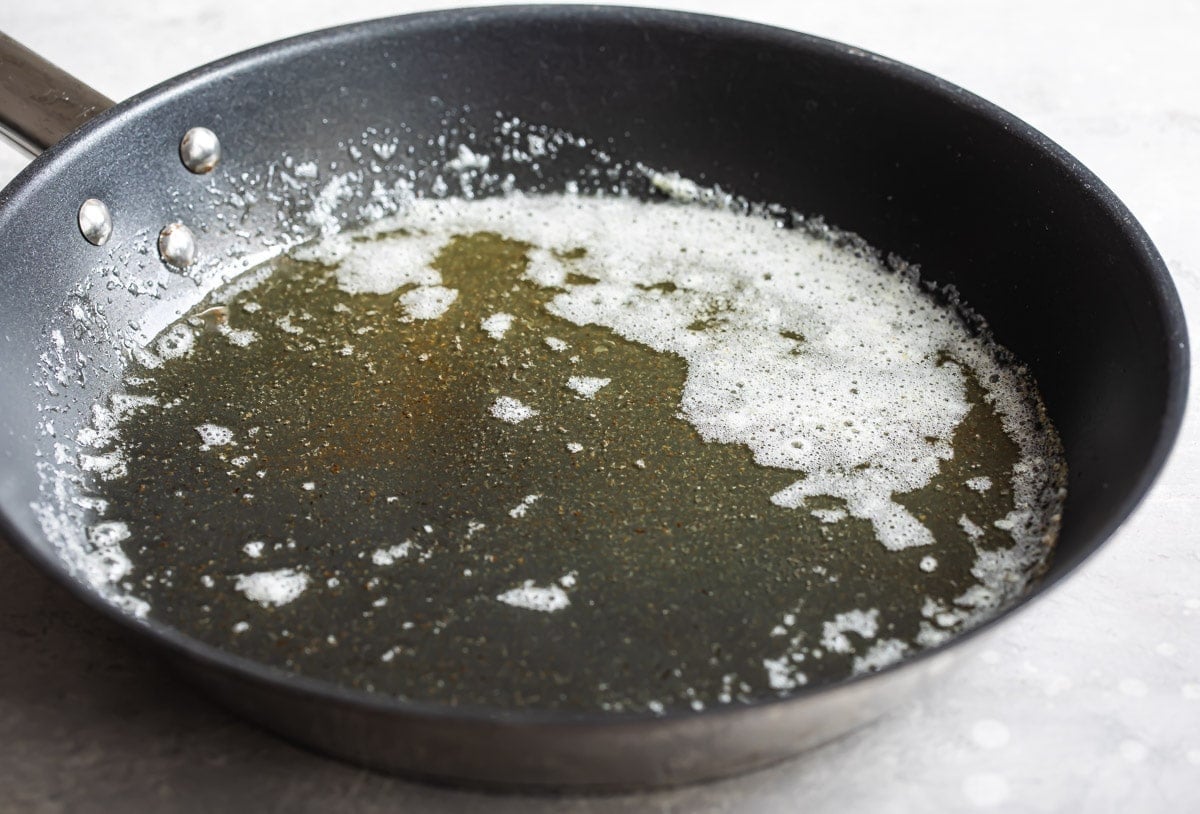

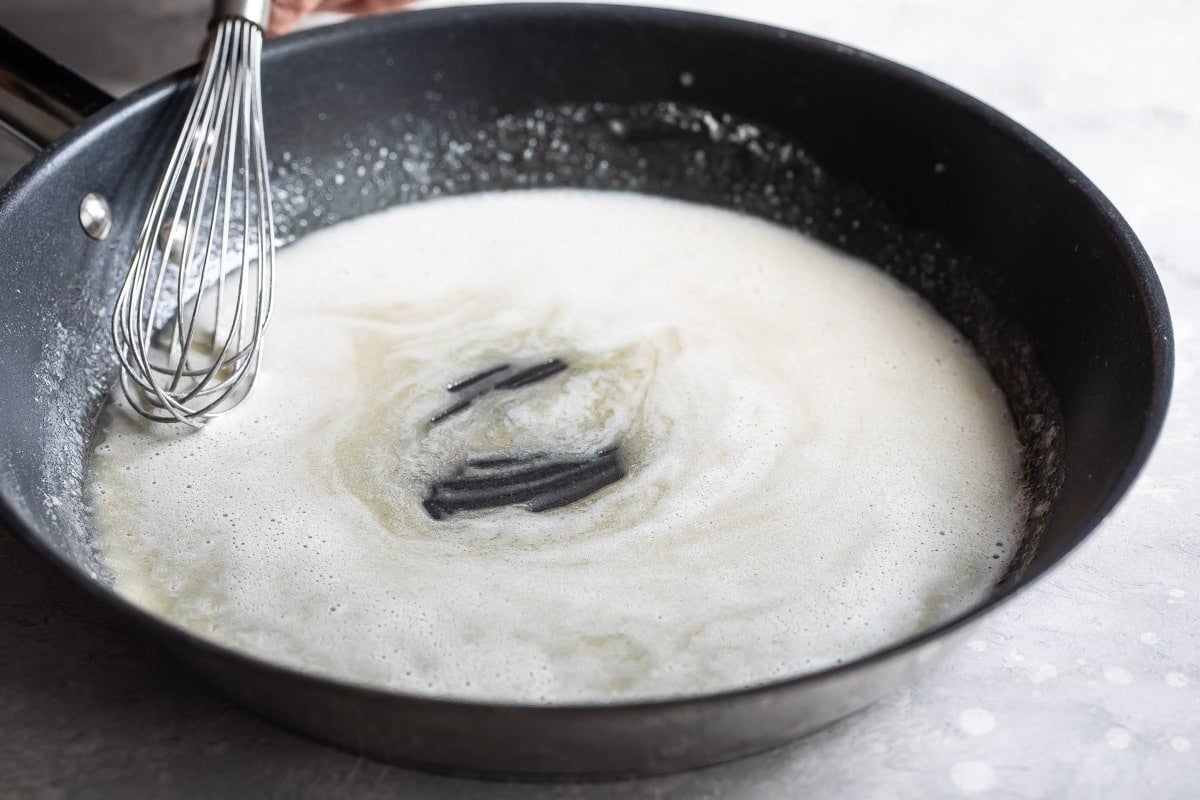
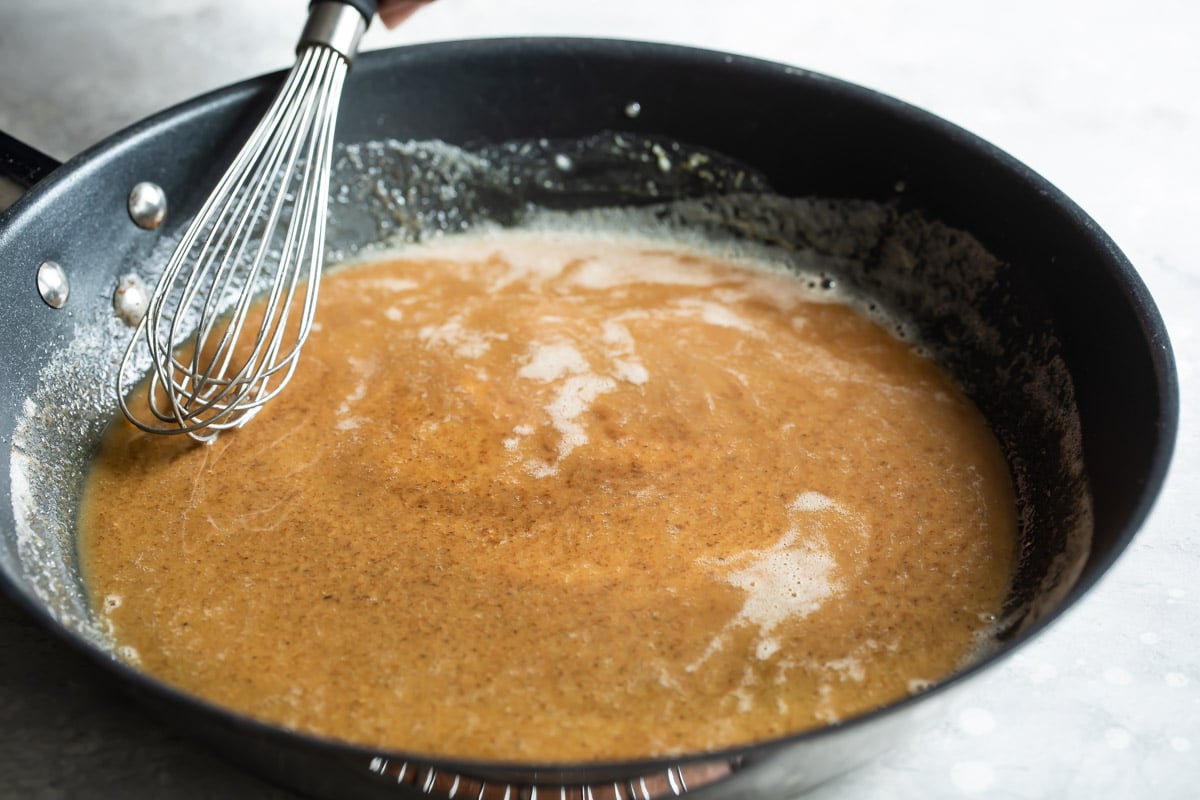
Does it matter if the liquid if hot, warm or cold when being added to the roux?
Hi Darice, great question, it does! The rule of thumb is to add cold liquid to hot roux, and cold roux to hot liquid. In my experience, cold liquid can include room temperature. When making roux as listed here, aim for adding a cool liquid to the pan. Thanks! – Meggan